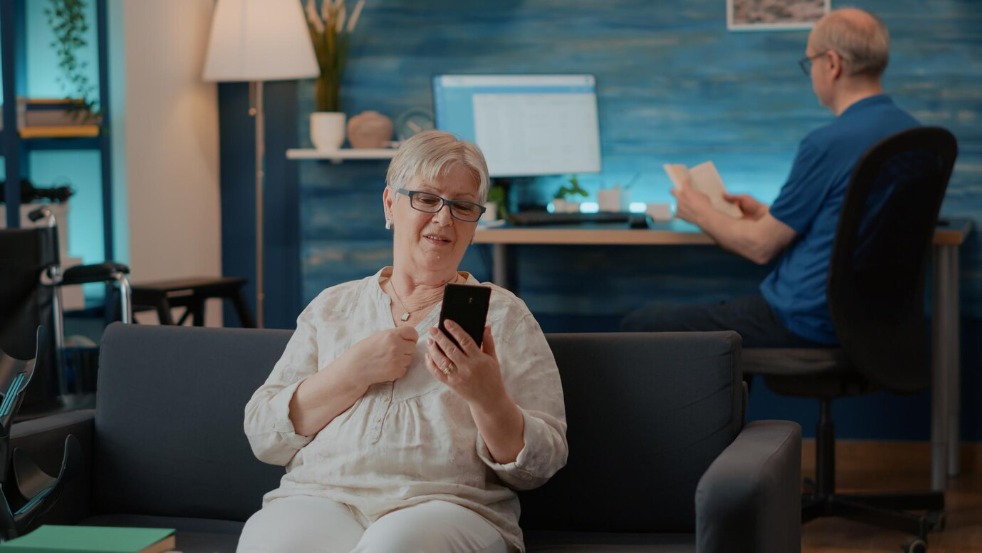In our busy daily routines, it’s simple to overlook the importance of taking a break, especially for those who shoulder the responsibilities of caring for others. Whether you are a family caregiver tending to a loved one with special needs or a professional caregiver in a healthcare setting, the role’s demands can be overwhelming. This is often a temporary break or relief for primary caregivers, is vital in preventing burnout and ensuring quality care.
Overview of the increasing demands on caregivers
This emerges as a crucial solution to alleviate the rising pressures on caregivers. This offers a reprieve, allowing caregivers to leave their responsibilities and tend to their well-being. The demands on caregivers extend beyond the physical aspects of care, encompassing emotional and psychological factors. As the responsibilities pile up, caregivers may be stretched thin, impacting their ability to provide adequate care and maintain a healthy work-life balance.
Recognition of the importance of self-care for caregivers
Recognising the importance of self-care for caregivers has gained significant attention in recent years, acknowledging the critical role that caregivers play in supporting individuals with various health conditions or disabilities. Caregivers often find themselves dedicating a substantial amount of time and energy to meet the needs of loved ones, and in doing so, they may neglect their well-being.
Overview of emerging caregiving trends in 2024
The caregiving landscape is undergoing significant changes in 2024. This overview explores key developments shaping caregiving practices and support mechanisms.

Technological Integration in Caregiving:
The year 2024 witnesses a heightened integration of technology to enhance caregiving processes. Innovations such as telehealth services, remote monitoring devices, and artificial intelligence applications are becoming integral in providing real-time support to caregivers.
Personalised Care Plans and Customised Solutions:
The trend towards personalised medicine extends to caregiving, focusing on tailoring care plans to the specific needs of individual care recipients. From dietary preferences to cultural considerations, caregiving approaches are becoming more nuanced and personalised.
Public Awareness of Caregiver Challenges:
In 2024, there is a heightened public awareness of the challenges faced by caregivers. This increased awareness translates into advocacy efforts, educational campaigns, and policy changes to support caregivers better.
Increased Awareness of Caregiver Burnout
As the demands on caregivers continue to evolve and intensify, there is a growing recognition of the physical, emotional, and mental toll that caregiving can take on individuals providing care to their loved ones.
Understanding Caregiver Burnout:
Caregiver burnout happens when caregivers feel extremely tired and emotionally drained for a long time. They may start to feel distant and overwhelmed. Now, more people, doctors, and groups are realising this problem, and they are actively working to take care of the well-being of caregivers.
Acknowledging the Importance of Self-Care:
One of the critical responses to the awareness of caregiver burnout is a renewed emphasis on the importance of self-care. Caregivers are being encouraged to prioritise their well-being, recognising that maintaining their health is crucial for sustaining effective caregiving in the long term.
Employer Recognition and Support:
Another emerging trend is the increased recognition of caregiving responsibilities in the workplace. Employers are beginning to acknowledge the challenges faced by employees who serve as caregivers and are introducing supportive policies like flexible working hours. Telecommuting options, and employee assistance programs.
Emphasis on mental health and well-being:
The growing emphasis on mental health support for caregivers today encompasses a multifaceted approach, with relief care emerging as a pivotal component. Recognising the emotional strain caregivers often endure, integrating into mental health support initiatives signifies a comprehensive strategy to address the well-being of those shouldering caregiving responsibilities.
Remote caregiving challenges and solutions

Coordination of Care:
Coordinating care from a distance can be complex, especially when multiple individuals or healthcare providers are involved. Establish open communication channels among family members, healthcare professionals, and other support networks.
Access to Medical Information:
Remote caregivers may struggle to access the care recipient’s medical records and coordinate with healthcare providers. The care recipient must sign consent forms allowing healthcare professionals to share information with remote caregivers.
Emotional and Psychological Impact:
Prioritise emotional support for remote caregivers through virtual counselling, support groups, and regular check-ins with other family members. Encourage open communication about feelings and concerns, fostering a supportive network that acknowledges the emotional challenges of remote caregiving.
Respite for Local Caregivers:
Local caregivers may bear the primary responsibility, leading to burnout and exhaustion. Encourage and support local caregivers by organising a network of volunteers or professional caregivers who can provide relief care.
Respite Care: A Necessary Break
Definition and Explanation :
This provides a temporary break or support provided to caregivers, allowing them to take a break from their caregiving responsibilities. This break can be crucial for caregivers who are often immersed in the demanding task of caring for individuals with health conditions or disabilities.
Importance of Taking Breaks for Caregivers:
Preventing Burnout:
Caregivers often dedicate extensive time and energy to meeting the needs of their loved ones. Without breaks, the risk of burnout increases significantly. Burnout can manifest as chronic stress, fatigue, and a decline in overall well-being.
Maintaining Physical Health:
The physical challenges of caregiving can have an impact on the caregiver’s health. Breaks allow caregivers to attend to their health needs, whether through rest, exercise, or medical appointments. This proactive approach contributes to the caregiver’s overall physical well-being.
Enhancing Emotional Well-Being:
Caregiving is emotionally taxing, and continuous involvement without breaks may lead to emotional exhaustion. Taking time off through relief care allows caregivers to address their emotional needs, reducing stress and fostering a more positive and resilient emotional state.
Preserving Relationships:
Caregivers often juggle multiple roles, including family and professional responsibilities. Taking breaks enables caregivers to balance their various parts, preventing strain on family relationships and also reducing the risk of social isolation.
Exploring Respite Care Options
In-home Respite Care Services:
Trained professionals or caregivers relieve the primary caregiver, allowing them to take a temporary break. This option is particularly beneficial for caregivers who prefer to keep their loved ones in a familiar setting. In-home care services may include personal care assistance, companionship, and help with daily activities.
Short-term Residential Respite Care Facilities:
Short-term residential facilities offer caregivers a more extended break by providing temporary accommodation for care recipients. These facilities are equipped to meet the specific Individuals who need help with daily activities or tasks those with medical conditions.
Community-based Respite Care Initiatives:
Community-based relief care initiatives encompass a range of Support services created to address the varied needs of caregivers and care recipients within a community. This may include volunteer programs, support groups, and community events focused on relief care.
Benefits of Respite Care in 2024

Improved Caregiver Mental Health:
Reduction of Caregiver Stress:
Relief care serves as a valuable tool in alleviating caregiver stress. Regular breaks allow caregivers to step away from the demands of their responsibilities, reducing the cumulative stress associated with continuous caregiving.
Prevention of Burnout:
By providing caregivers with necessary downtime, This might helps to prevent burnout. Caregivers who experience burnout are more susceptible to mental health conditions like anxiety and depression.
Opportunity for Self-Care:
Respite care creates opportunities for caregivers to engage in self-care activities. Whether it’s pursuing hobbies, exercising, or simply having moments of solitude, these activities play a crucial role in maintaining mental health.
Enhanced Overall Well-being for Caregivers:
Physical Well-being:
Respite care contributes to the overall well-being of caregivers by allowing them to attend to their physical health. Regular breaks enable caregivers to rest, exercise, and prioritise their health needs, fostering a healthier lifestyle.
Social Connection and Support:
Taking respite breaks provides caregivers with opportunities for social connection. Whether it’s spending time with friends, participating in support groups, or simply enjoying social activities, these interactions contribute to the overall well-being of caregivers by reducing feelings of isolation and fostering a sense of community.
Improved Sleep and Rest:
Caregivers often face disruptions in their sleep patterns due to the demands of caregiving. Which offers caregivers the chance to get adequate rest and sleep, contributing to improved overall well-being. Quality sleep is crucial for physical and mental health, and timeout care facilitates a more balanced sleep routine.
Positive influence on the quality care offered to Loved Ones:
Increased Patience and Compassion:
Caregivers who benefit from relief care return to their caregiving roles with increased patience and compassion. The mental and emotional recharge gained during breaks positively impacts the caregiver’s ability to provide attentive and compassionate care to their loved ones.
Reduced Caregiver Fatigue:
Caregiver fatigue can compromise the quality of care provided. It helps mitigate fatigue by providing caregivers with essential breaks, ensuring they are physically and mentally refreshed when attending to the needs of their loved ones. This, in turn, enhances the overall quality of care.
Promotion of Sustainable Caregiving:
By supporting caregiver mental health and overall well-being, interim care contributes to sustainable caregiving. Caregivers prioritising their well-being are more likely to provide consistent, high-quality care to their loved ones over an extended period.
Navigating Respite Care Challenges

Addressing Common Concerns and Misconceptions:
Misconception: Sign of Inadequacy:
Emphasise that seeking interim care is not a reflection of inadequacy but a proactive step to ensure sustained and effective caregiving. It allows caregivers to prioritise their well-being, making them better equipped to provide quality care.
Concern: Fear of Judgement from Others:
Encourage open conversations about the challenges of caregiving and the need for respite. Promote a supportive community that understands the complexities of caregiving, reducing the stigma associated with taking breaks.
Misconception: Only for Crisis Situations:
Clarify that relief care is not solely for emergencies but is a valuable resource for ongoing support. Regular breaks contribute to overall caregiver well-being and can prevent crises by reducing stress and burnout.
Overcoming Barriers to Accessing Respite Care:
Lack of Information:
Increase awareness about available respite care options through educational campaigns, workshops, and accessible information resources. Ensure caregivers are informed about the variety of respite services tailored to their needs.
Financial Constraints:
Advocate for financial support for timeout care services through government programs, insurance coverage, or community initiatives. Collaborate with local organisations to identify and secure funding sources for caregivers facing financial challenges.
Limited Availability of Respite Care Providers:
Work towards expanding the pool of respite care providers by encouraging training programs and incentivising professionals to specialise in interim care. Collaborate with healthcare institutions to integrate respite care into their service offerings.
Respite Care Technologies and Innovations
Digital Platforms Connecting Caregivers with Respite Care Services:
Online Marketplaces:
Digital platforms act as marketplaces connecting caregivers with diverse support services. These platforms provide a convenient way for caregivers to explore and access various respite care options, fostering a more accessible and flexible caregiving ecosystem.
Appointment Scheduling Apps:
Caregivers can now use appointment scheduling apps to arrange respite care services seamlessly. These digital tools streamline the process, allowing caregivers to find available providers, schedule services, and receive real-time updates.
Virtual Support Communities:
Digital platforms create virtual communities where caregivers can connect, share experiences, and access valuable resources. These online communities serve as forums for peer support, offering a space where caregivers can exchange gain insights, seek guidance, and establish a network of shared understanding.
Wearable Devices and Monitoring Tools for Remote Caregiving:
Wearable Health Trackers:
Wearable devices equipped with health monitoring features are revolutionising remote caregiving. These devices track vital signs, activity levels, and sleep patterns, providing real-time data to caregivers and healthcare professionals.
Remote Camera Systems:
Innovations in remote camera systems offer caregivers a visual connection to the care recipient’s environment. These systems, often integrated with mobile apps, enable caregivers to monitor their loved ones, ensuring their well-being and safety even from a distance.
Medication Management Apps:
Medication adherence is critical ,Apps that assist in medication management send reminders, track dosage schedules, and provide alerts to caregivers, minimising the likelihood of mistakes and advocating for improved.
Conclusion:
As we reflect on the dynamics of caregiving in 2024, it becomes increasingly evident that the well-being of caregivers is paramount in sustaining compassionate and effective care for loved ones. The importance of caregivers taking breaks, as emphasised throughout this discussion, cannot be overstated.
In revisiting the essence, it is crucial to underscore the profound impact of regular breaks on caregivers. These pauses in caregiving duties contribute to reducing stress, preventing burnout, and overall improving mental and physical well-being. By recognising the significance , caregivers empower themselves to provide sustained, high-quality care.
At MCT Care, we extend earnest encouragement to all caregivers to explore the diverse options available. Whether through in-home services, day programs, or innovative technologies, This offers tailored solutions to the unique needs of caregivers and care recipients. Embracing these options is not a sign of weakness but a proactive step towards fostering a healthier caregiving experience. Reach out to MCT Care to inquire about respite care services.

